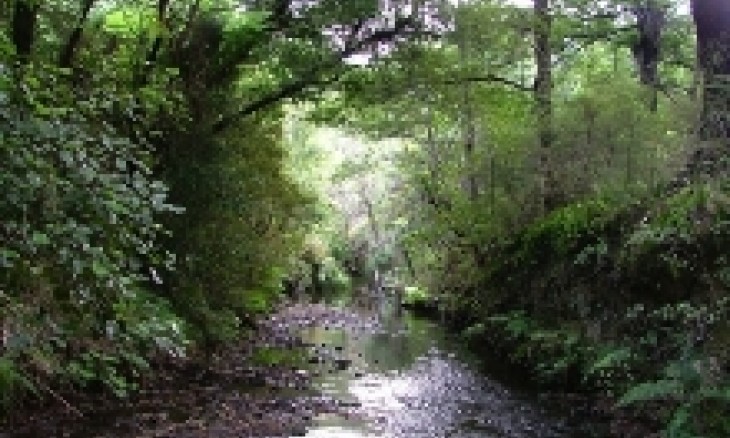The reasons East Harbour Regional Park is an Ecological Treasure

East Harbour Regional Park
East Harbour Regional Park is one of the eight Lower Hutt ecological treasures. The park is on the eastern side of Wellington Harbour, and is managed by Greater Wellington Regional Council.
The park is an ecological treasure because:
- It is one of five Wellington regional parks which provide protection for important landscape, heritage and environment values in Wellington. East Harbour Regional Park itself provides protection for the Northern Forest, Parangarahu Lakes and their wetla nds, and Baring Head.
- Parts of East Harbour Regional Park have been protected for many years. Greater Wellington has developed the park to the point where it is now managed as a single unit.
- East Harbour Regional Park provides recreational and open space opportunities, and this helps to promote public interest and education in conservation. Its forest is readily accessible to the public. Its hills are steep but it does provide tracks for a variety of ages and fitness levels.
- Community involvement in management of the park’s activities is intense and includes track minding, monitoring, weeding and research into the promotion of community involvement.
- Greater Wellington, Forest & Bird, and the general community are challenged to manage the recreational, community and commercial uses in a sustainable way that also protect the environmental and cultural heritage values.
Features of East Harbour Regional Park
East Harbour Regional Park covers just over two thousand hectares and is made up of four zones:
- Northern Forest: Northern Forest lies between Eastbourne and Wainuiomata, and is held as a scenic reserve. It consists of steep hill country with beech/rata forest, and podocarp/broadleaf forest on the valley floors. Lower Hutt Forest & Bird and the general Wellington community are very active in preserving the ecology of the Northern Forest and controlling pests. The Northern Forest is very popular for walking, tramping, dog-walking, picnicking, and hunting deer and pigs (by special permit).
- Gollans Valley: Gollans Valley is located within the Northern Forest Zone, and the only access to it is through the Northern Forest. Gollans Stream is approximately 14km in length with a 1700 hectare catchment. Both Gollans Stream and Butterfly Creek have native fish. High numbers of volunteers undertake pest control and species monitoring. Outdoor activities are tramping and bush walking. Controlled dog-walking is permitted. There is a deer-hunting area, with strict controls. Low-impact camping is permitted in forested areas, except the Butterfly Creek picnic area. Mountain biking and horse riding are banned.
- Parangarahu (Pencarrow) Lakes: The Parangarahu (formerly Pencarrow) Lakes, are two freshwater lakes, Kohangapiripiri and Kohangatera. They are also called the Kohanga Lakes. The lakes are located at Wellington’s main harbour entrance and are held as a recreational reserve. The Parangahu Lakes are significant for their wealth of native plants and wildlife, and archaeological sites. Public access is from Burdans Gate, via Pencarrow Coast Road. Many visitors may enjoy walking, cycling and mountain biking opportunities.
- Baring Head: Baring Head is a recreational reserve at the southern terminus of the East Harbour Hills. It is less than one hectare and surrounds Baring Head Lighthouse. Baring Head provides an important visual backdrop for Wellington Harbour, and provides walking, rock-climbing and non-motorised flight opportunities. Baring Head has been off limits to public access for legal reasons but was opened to the public on 13 February 2011.
History of East Harbour Regional Park
East Harbour Regional Park is one of five Wellington regional parks which were established to provide ‘semi-remote’ outdoor recreation opportunities. The Eastbourne hills have been popular with walkers since the late 1800s. In the early 1900s Butterfly Creek was developed as a stop-off point for walkers going through the Rimutaka Ranges, and became a popular picnic area. In 1975 a regional park was formally proposed for East Harbour; the plan included private land and a proposed Pencarrow Regional Park. The concept was renamed East Harbour Regional Park and would include only public land. In 1991 Greater Wellington purchased the Pencarrow Lakes for addition to the park because it recognised the ecological importance of the lakes and their wetlands, and had stock removed after the grazing lease expired in 2004.
In 1995 Greater Wellington developed the park’s first management plan. At first, management was coordinated between the Department of Conservation, Hutt City Council, and Greater Wellington; the three agencies then rationalised land management so Greater Wellington could administer the park as a single unit. Viewing the park as a single entity enables sustainable management to be administered more effectively. Since 1995 Greater Wellington has worked to improve bush tracks, infrastructure and environmental restoration of East Harbour Regional Park.
Ongoing development of East Harbour Regional Park as an Ecological Treasure
Forest & Bird helps to enhance and develop East Harbour Regional Park as part of the Wellington Regional Park network and manage its environmental and cultural heritage through:
- Protection of landscapes, ecosystems, geographical features, and cultural and historical values.
- Maintenance of healthy ecosystems, indigenous forest and wetlands.
- Improvement of bush tracks, infrastructure, and environmental restoration.
- Respect, protect, and provide for tangata whenua (Maori) interests in East Harbour Regional Park.
- Public education in environmental values through recreational activities and community projects.
